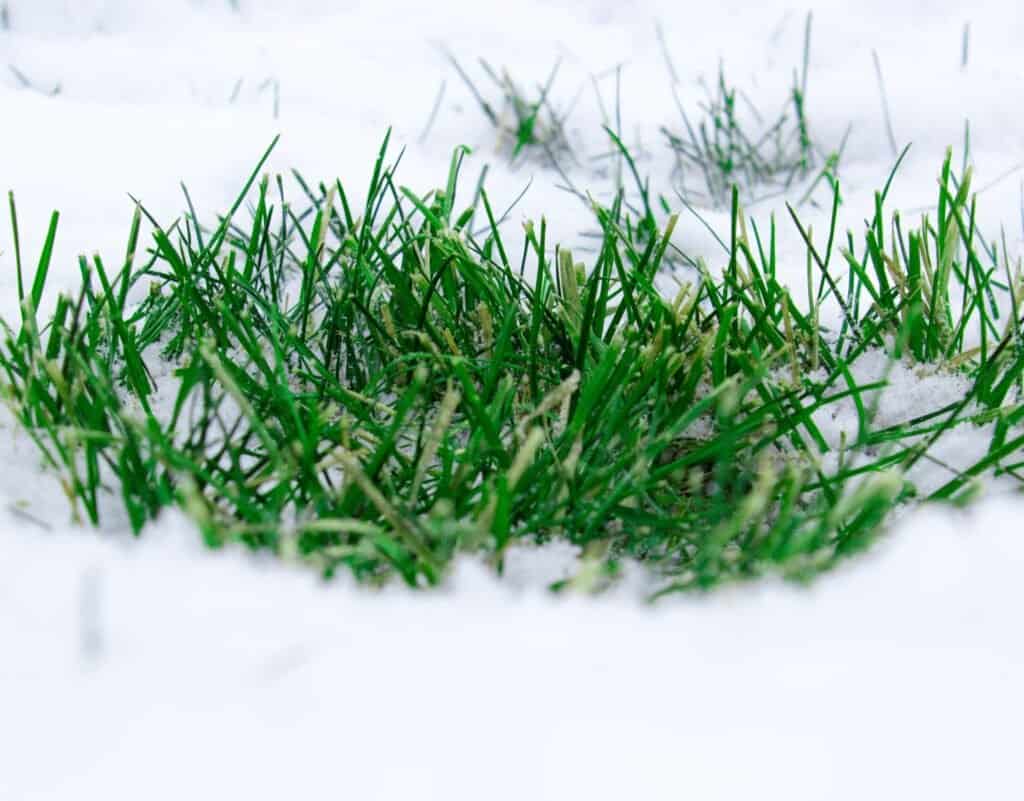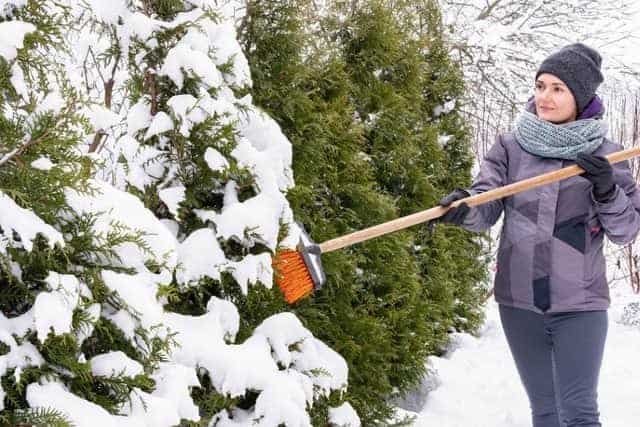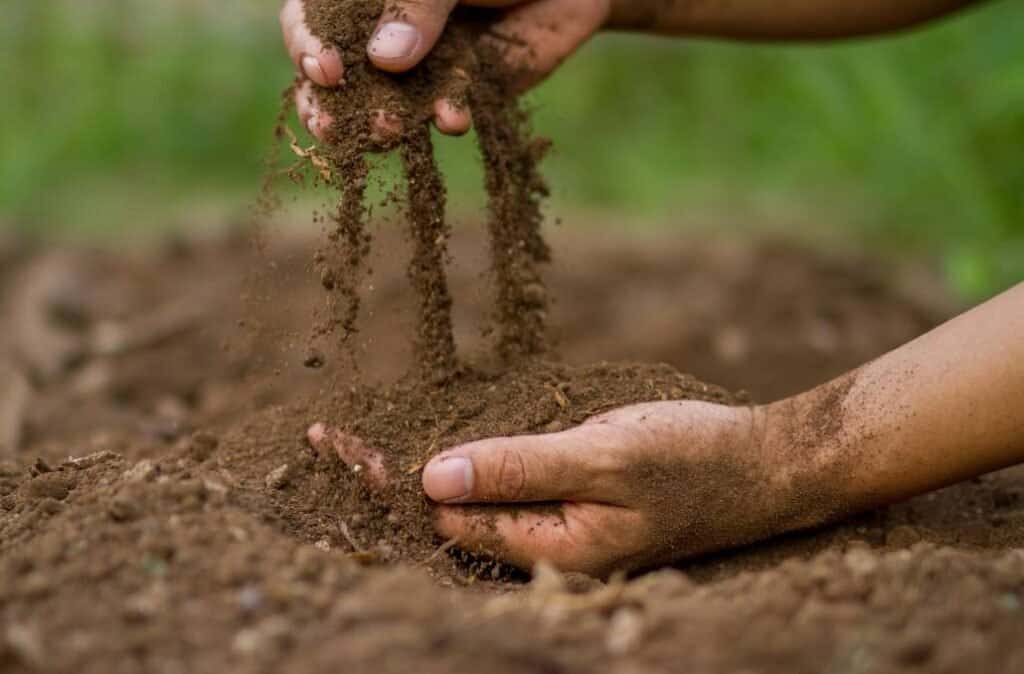As autumn fades away, it’s time to embrace winter by giving your lawn the attention it needs for its winter lawn care tips. Chilly temperatures on their way make it essential to prepare it for what lies ahead.
But where should you begin? Not to worry: our comprehensive guide of winter lawn care will assist in making this task simpler, fortifying soil and safeguarding delicate plants are just two aspects we will cover here as part of winter lawn maintenance! Get ready to discover its secrets!
Table Of Contents
Unexpected Winter Dangers to Your Yard

Explore several winter hazards to your yard and learn valuable tips to keep it in tip-top shape.
1. Slippery Walkways
When the temperature drops, there is an increased risk of accidental falls and slips due to icy sidewalks and walkways. If you have slippery areas in your front yard, always approach with caution and assume that all pavements are wet. Water vapor can freeze on the surface, forming a nearly invisible layer of thin ice, so always be careful. This is a sighn that you need winter lawn care right away.
2. Pests
While some insects die, many pests thrive during this colder season. These creatures usually thrive in sturdy structures, leaf piles, thatch, wood piles and tall grass. Here are some common pests you should look out for:
- Grubs: These pests come from deep under the soil to transform into beetles. They chew on grass roots and attract other pests like moles and skunks.
- Fleas and Ticks: While more commonly known to cause trouble during warmer months, they can withstand the cold weather in brushes and leaves. Fleas and ticks can still find their way into your pet’s body.
- Stink Bugs: During winter, these bugs gather in hollow logs and leaf bundles on your lawn until spring. They might also hide in your attic or basement.
- Chinch Bugs: They may be small but can significantly damage your yard. Chinch bugs suck the juice out of the grass. They spend hiding in dead trees and thatch.
- Voles: This pest feeds on your lawn’s grass and wildflowers. You’ll find evidence of this mouse-sized creature after the snow melts and your yard sees the sun.
3. Crown Hydration
This condition happens when the temperature fluctuates, causing snow to melt and freeze on the top of the grass. These fluctuations cause thawing and refreezing that may lead to plant death. The most affected areas are in the low-lying, poorly-drained soils.
Predicting the extent of the damage is challenging, as factors such as temperatures and other environmental conditions come into play.
4. Ice Dams
Ice dams are ridges of ice appearing on the edge of your roof. During winter weather, improper heat ventilation causes melting snow to freeze along the colder eaves and gutters. Ice dams can cause excess standing water to collect, posing a danger to both your home and yard. These can indirectly damage your yard as ice forms and melts.
If not treated in a timely fashion, these ice dams can result in large amounts of water and ice crashing unexpectedly into your yard. In the worst cases, they can pull the shingles and gutters down with them. Make sure to keep the area clean, and if you see ice dams begin to form, take action immediately.
5. Snow Mold
If you see pink, yellow or gray patches on your lawn after the snow melts, it might be snow mold. This condition happens when the fluctuating temperatures and moist soil trigger a type of fungus to grow. Watch for pink snow molds, which are more severe and can cause death in grass.
6. Winter Desiccation
Cold and windy weather can cause lawn desiccation. This condition happens when foliage loses more moisture faster than the roots absorb. The symptoms include leaf spots, discoloration and browning. Some plants will also show yellowing or burned tips.
Best Winter Lawn Care Tips
As temperatures drop, the need for taking care of your yard increases. Here is a way to Prepare Your Lawn For Winter tips to keep your landscape safe from the colder temperatures:
1. Remove Snow From Plants

Ice can weigh down leaves and grass. When it accumulates, it can lead to plant death when exposed to carbon dioxide buildup. After every 2 inches of accumulation, remove snow immediately. With a broom, use upward sweeping motions gently. If you brush downwards, you might break the branches.
Examine if ice has formed on branches on warmer days. Avoid using too much salt in your landscape, as it can be deadly to plants when it builds up in the soil. Shovel snow away from your yard — position piles of dirty snow away from your landscape to ensure your foliage remains healthy.
2. Add a Layer of Mulch
Mulch acts as the plant’s insulator, providing heat and locking the moisture in the soil during cold temperatures. Adding a layer to your garden helps protect the root system of your plants.
Add a thick 3- to 5-inch layer of mulch after the first hard freeze. Wood mulch is unnecessary during the colder months — lightweight materials, such as pine straw and chopped leaves, are ideal.
3. Rake Leaves off the Yard
Get rid of leaves that have fallen during the fall season. The ideal time to do this is before the first frost of the early winter season when leaves are still dry. When left unraked, it can increase the risk of snow mold diseases and turf damage from critters in the spring.
You can compost the leaves or create a mulch out of them. This method requires you to chop up dry leaves by mowing over them. Afterward, collect them using a grass catcher or mulching container. When your yard is all clean and leaf-free, remove dirt and debris from your rake to keep it from rusting and extend its life for years.
4. Water Plants
Watering plants may seem pointless during colder days since many plants are dormant. However, evergreen trees and shrubs lose significant moisture during winter, especially when it’s windy. Providing irrigation at least once a month helps moisten the soil, aiding root growth and optimal plant health.
Keep an eye on the weather forecast and water all plants at least a day before hard-freezing weather arrives. Choose quality water sources, too — use water testing kits to identify potential imbalances or contaminants to ensure your plants receive the care they deserve.
5. Keep Soil Healthy

There are many ways to keep your soil healthy before freezing temperatures set in. For instance, you can sow cover crops to cover the ground during winter, preventing erosion. They also recycle and retain plant nutrients, improve soil structure and enhance organic matter.
Dandelions, chickweeds and other winter weeds are also essential for soil protection. While beneficial, these can quickly take over your landscape. Keep your yard healthy with proper mowing, appropriate watering and fertilization.
Maintain a Healthy Outdoor Space This Winter
Implementing these actionable tips will safeguard your yard from damage as temperatures drop. Consistency is key — stay committed to these practices, and you’ll reap the fruits of your labor in the coming seasons.








